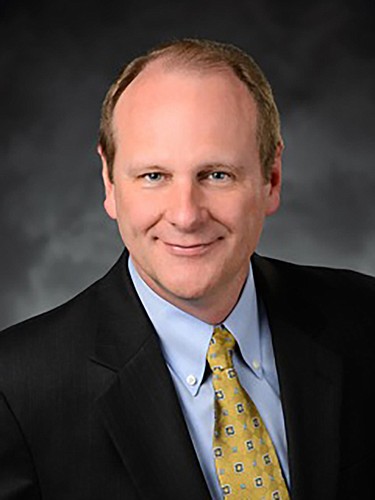CARL ROEDER
Senior Vice President and Commercial Real Estate Manager |
BB&T | Tampa
Carl Roeder has been involved in commercial real estate lending for more than three decades, and today is head of BB&T's Commercial Real Estate Lending Group for West and Southwest Florida, an area that covers from Tampa to Naples. The Winston-Salem, N.C.-based bank, whose holding company has assets of $222 billion and a market capitalization of $29 billion, operates throughout Florida and 14 other states and the District of Columbia. In all, BB&T operates more than 2,200 locations.
What's the state of the commercial real estate lending market along the Gulf Coast?
I would say it is still active, and because homebuilders have experienced excellent new home sales around the Gulf Coast region in the past few years, it has spurred other new, commercial development. Particularly in Sarasota and the Lakewood Ranch areas, there's been real growth. With that said, most banks have tightened their underwriting standards in 2016, as a result of greater scrutiny from regulators, who are being mindful of our current point in the real estate cycle. They're requiring more conservative loan-to-value ratios and higher up-front equity, and I think that will continue.
What property types are being financed the most, and what asset classes are borrowers seeking to finance most often?
Multifamily and hospitality projects are the most requested for loans, but that's also because they tend to be larger dollar projects. And in the past few years, there's been a lot of development of those sectors along the Gulf Coast. As a result, those projects today are also getting more underwriting scrutiny for new loans. Consider, in downtown Sarasota alone, there are like eight new multifamily rental projects under construction in some form, and that's echoed throughout the region. What we're seeing the opportunities for now are self-storage projects, build-to-suit retail, senior housing and pre-sold condos. There's good appetite there among lenders. New office development has lagged behind, but even there, there's opportunity for a well-conceived project to go forward. Self-storage actually makes a great deal of sense right now, because that asset class often follows multifamily development.
What's been the biggest change in commercial real estate lending you've seen over the past 12 to 18 months?
It has to be the increased government regulation and oversight of commercial real estate lending, given where we are in the current cycle. Most people had never heard of high-volatility commercial real estate as it related to commercial construction loans 18 months ago. That stipulates, through new regulations, that banks obtain more equity from borrowers seeking to finance new projects. And that's had an effect of limiting some new projects or limiting returns on others. Still other developers are turning to third parties for additional equity, and that, too, has had an impact on both borrowers and investors. But regulatory scrutiny has really been the biggest change, which has prompted banks to be more careful to stay within required thresholds.
From a banking perspective, where do you anticipate the market being 12 to 18 months from now?
I'd say it's going to be incrementally slower, but we're still going to be experiencing solid growth and opportunities in select asset classes, as I mentioned before, like in self-storage and senior housing, just to name two. I think interest rates will have some impact on growth, as they tick up modestly over the next 12 to 18 months, as well, and again, underwriting criteria will continue to tighten in response to increased scrutiny and the amount of development and new lending that's already occurred in recent years.
What's been the biggest surprise from your perspective that you've seen this cycle?
I'd have to say it's how interest rates have remained so low for so long. I really would have thought that they would have ticked up somewhat by now, given all the economic data that typically causes them to move. That, and the compression of cap rates. There's so much capital chasing deals now in commercial real estate because it's such a good investment class, relative to other investments. Investors are looking to get yield from income-producing properties because they can't generate similar returns from other places, so they're turning to commercial real estate. That, in turn, is pushing down capitalization rates on just about every kind of property.






